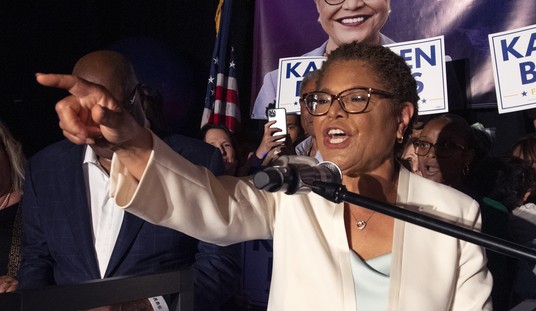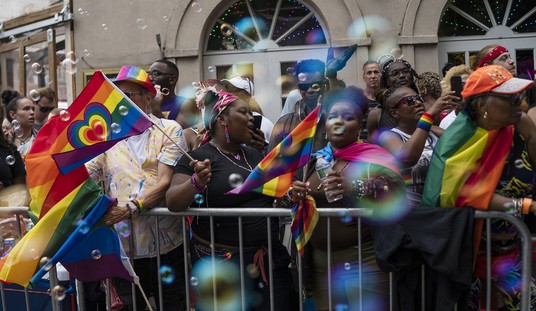
The US Ninth Circuit Court of Appeals issued a 2-1 ruling today authorizing the Trump Administration to initiate deportation proceedings against as many as 300,000 illegal aliens from the country of El Salvador.
For nearly 20 years this group of illegal aliens has been provided “Temporary Protected Status” under a law passed by Congress in 1990 due to conditions in El Salvador that prompted them to flee and seek refuge in the United States. But the law allows the Department of Homeland Security to review the conditions in the refugees home country from time to time as provided in the statute, and to terminate that status under appropriate factual circumstances.
In 2017 and 2018, the Trump Administration initiated proceedings to end the TPS status for the El Salvadorans, and begin the process for returning them to their home country. Upon issuance of an administrative order, the Plaintiffs filed suit in the Northern District of California — shocking — and sought an injunction prohibiting DHS from carrying out the order. US District Court Judge Ed Chen agreed with the Plaintiffs, and issued a preliminary injunction against the Trump Administration’s policy decision on an immigration matter, notwithstanding a provision in the statute stating that the decisions of DHS are not subject to judicial review.
Today’s decision vacated the preliminary injunction on a variety of grounds, most notably that the Court lacked jurisdiction to review Immigration orders such as the one issued by DHS in this case, and based on the ground that the Plaintiffs had not demonstrated a likelihood of success on the merits with regard to their “Equal Protection” claims.
The two judges voting in the majority were Judge Consuelo Callahan and Judge Ryan Nelson. The dissenter was Judge Morgan Christen.
Judge Callahan was appointed to the Ninth Circuit by Pres. Bush 43 in 2003, and Judge Nelson was appointed by Pres. Trump in 2018. Judge Christen was appointed by Pres. Obama in 2012.
This is the second significant 2-1 decision from the Ninth Circuit in recent weeks. On August 14, the Ninth Circuit struck down a California law banning high-capacity magazines as a violation of the Second Amendment. The majority opinion was written by Judge Kenneth Lee, another appointee of President Trump, and he was joined in the decision by Judge Callahan. The dissenter was Judge Barbara Lynn, a US District Court judge appointed by Pres. Clinton.
All the full-time active judgeships in the Ninth Circuit are currently filled — for the first time that I can ever remember and I have practiced in the Ninth Circuit since 1992. There are 29 active judgeships in the Circuit. The current composition in terms the number of active judges and the Presidents who appointed them is as follows:
Clinton — 9
Bush — 3
Obama — 7
Trump — 10
Those numbers reflect the willingness of the Democrats controlling the Senate from 2000 to 2008 to refuse to confirm judges nominated by Pres. Bush 43. It also shows what happened after Harry Reid changed the Senate rules and removed the filibuster for Circuit Court Judge nominations.
So while the overall makeup of the Court remains titled towards liberals, it is not nearly so reliable in that manner as it once was.
But what about reversing these decisions with “en banc” panel decisions? Well, because of the Ninth Circuit’s size, the “en banc” panels used by the Court do not involve all the active members as is the case in many other Circuits. The Ninth’s “en banc” panels consist of only 11 of the 29 active judges in the Circuit, with the panel members chosen at random by a computer program. So while the “math” says the “en banc” panels should still tilt in a liberal direction, there is no certainty any longer of that outcome with 13 active judges who were appointed by GOP Presidents.
In addition, the Ninth Circuit understands that en banc decisions often attract greater interest from SCOTUS, and the Ninth Circuit’s track record in cases SCOTUS takes up for review is poor.
And it’s just not feasible from the standpoint of the Ninth Circuit’s caseload to use en banc review as a backstop to eliminate 2-1 panel decisions that result in conservative outcomes. Appeals court judges have an unusual comity amongst themselves where they understand decisions that disappoint them will often come from panels on which they are not members. That is the nature of having 29 different judges deciding cases in groups of three. Not every decision that a majority disagrees with is a vehicle to express the majority sentiment through an en banc decision reversing the panel outcome — especially when the panel of the en banc court is not assured to end up with the same legal mindset as the majority.
The Ninth Circuit, by virtue of its size — the population of citizens covered by the Ninth Circuit is more than twice the size as the population of citizens in the next largest federal appeals circuit — means that the decisions which come out of that Court have outsized consequences. District Courts in Seattle, Portland, and San Francisco have long been the favored filing locations for liberal interest groups wanting to wage “lawfare” against conservative Presidential administrations — never with more urgency and stridency than has been the case in the first term of the Trump Administration. Liberal trial court judges in these districts have repeatedly issued nationwide injunctions to stop Trump Administration policies and initiatives and, for the most part, have been backed up in their efforts in that regard by Ninth Circuit decisions affirming those injunctions.
Those days may now be mostly behind us. There are still nine judges on the Ninth Circuit appointed by Bill Clinton, with all of them having served at least 20 years now. Several of them are in their 70s. Maybe they will attempt to hold on through a second Trump term and not allow him to fill their positions, but I’ve been told that sentiment is rare. There is no promise what 2024 might hold in store, and the judge might have served four more years on the court working full time, and end up in exactly the same position with a new GOP President set to name their replacement. The only change is that the judge is now 4 years older.
The role of Senior Status judges on the Ninth Circuit Court should not be overlooked. Senior Judges are “semi-retired”, but they continue to serve on three-judge panels when called upon to do so based on the Court’s caseload. Senior Status judges do not participate in “en banc” decisions but in all other respects the serve in a capacity identical to active court judges.
There are currently 18 judges listed as having “Senior Status” with the Court, meaning they have not officially retired. Of those, 11 were appointed by Republican Presidents, and 9 by Carter and Clinton.
Of the names listed, based on my own knowledge in seeing decisions come down from the Court, I would estimate that only 12 are used with any consistency by the Court to help handle the Court’s caseload. Of those 12, only 4 were appointed by Bill Clinton. The remaining 8 Senior Judges used with any frequency in deciding cases were all appointed by either Bush 41 or Bush 43.














Join the conversation as a VIP Member